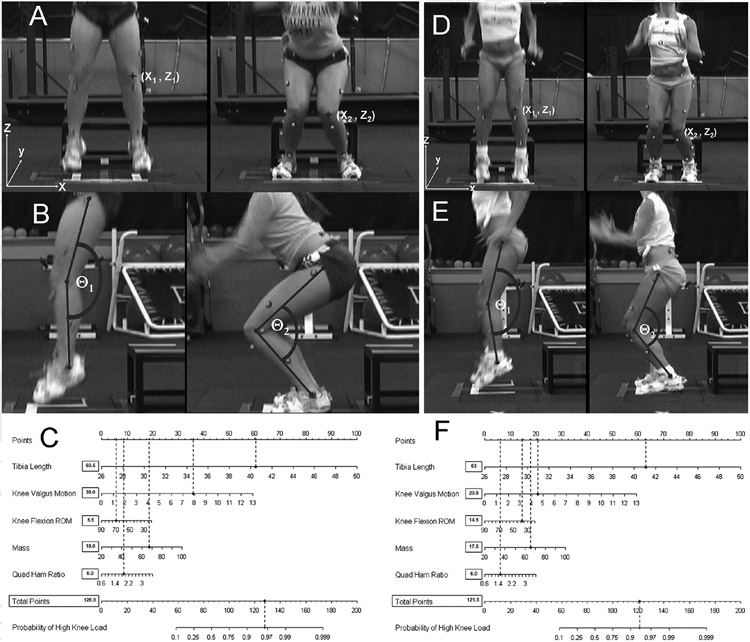Figure 5.
A) Subject with excessive knee valgus during the drop-vertical jump that contributes to her increased risk to demonstrate high knee abduction moment (KAM) landing mechanics. Knee valgus motion during the drop-vertical jump is calculated (X2−X1). B) Knee flexion range of motion (ROM) during the drop-vertical jump is calculated (Θ1−Θ2). C) Completed nomogram for the representative subject (tibia length, 40.5 cm; knee valgus motion, 7.8 cm; knee flexion ROM, 69.8°; mass, 67.5 kg; QuadHam, 1.90). Based on her demonstrated measurements, this subject would have a 95% (128 points) chance to demonstrate high KAM during the drop-vertical jump. Her actual KAM measure for the presented drop-vertical jump that was quantified simultaneously with 3-dimensional motion analysis was 44.1 Nm of knee abduction load. D) Example of representative subject with a combination of excessive knee valgus motion and small knee flexion ROM during the drop-vertical jump contribute to her increased risk to demonstrate high KAM landing mechanics. Knee valgus motion during the drop-vertical jump is calculated (X2−X1). E) Knee flexion range of ROM during the drop-vertical jump is calculated (Θ1−Θ2). F) Completed nomogram for the representative subject (tibia length, 41 cm; knee valgus motion, 4.6 cm; knee flexion ROM, 37.9°; mass, 65.3 kg; QuadHam, 1.51). Based on her demonstrated measurements, this subject would have a 93% (121.5 points) chance to demonstrate high KAM during the drop-vertical jump. Her actual KAM measure for the presented drop-vertical jump that was quantified simultaneously with 3-dimensional motion analysis was 77.6 Nm of knee abduction load.

